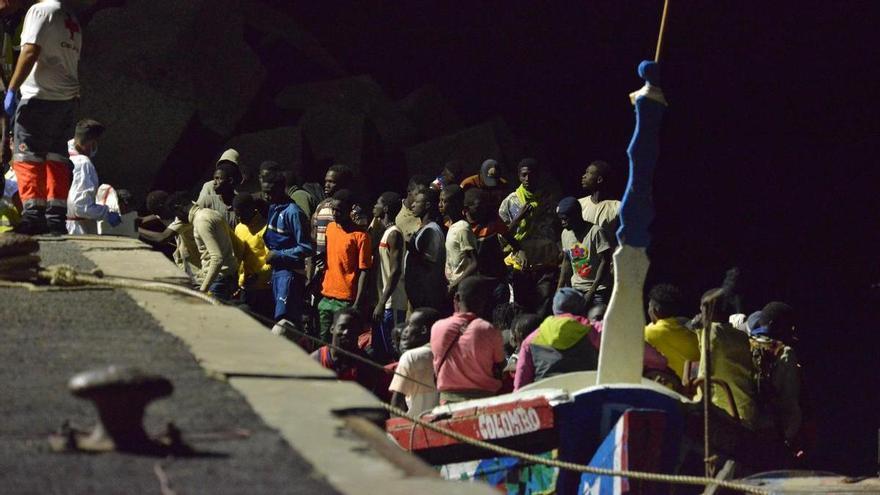
The whirlwind of high daily numbers of boat arrivals often overshadows what is truly important: Every day hundreds of people risk their lives just a few kilometers from the Canary coasts. And it doesn’t always turn out well. Early Wednesday morning could have been one of those days, but Maritime Rescue prevented it. The rescue teams faced a difficult night in which they had to attend to 200 people traveling on three different boats, one of them about to sink with 81 migrants on board. When help arrived, some were already at sea, which forced two boats and two helicopters to be mobilized to avoid a new tragedy.
He scare It occurred about 142 kilometers southeast of Maspalomas, in Gran Canaria. The Guardamar Calliope came to the rescue of an unstable boat and the quick action of the Helimer 204 from Gran Canaria and the 206 from Tenerife allowed one of the castaways to be pulled out of the water. The helicopter based on the western island transported the rescued person and two other people who were already safe on the Rescue boat to its base thanks to the actions of the sailors. Not even the high temperatures prevented the three suffered hypothermia for the time they spent fighting to survive at sea.
Despite the episode of terror, the 81 occupants – 71 men and 10 women – survived the difficult journey. The Guardamar Calliope He transported the rest of the occupants to the port of Las Palmas de Gran Canaria and there Four other occupants had to be taken to hospital. due to his delicate state of health.
But that was not the only rescue of the night. The activity began before midnight, when the teams received the notice that several inflatable boats that had left for the Canary Islands from somewhere on the Sahara coast located around Cape Bojador were in trouble in the Atlantic. In addition to the boat in trouble, Helimer 204 located another with 62 occupants about 122 kilometers south of Fuerteventura. That’s where the Salvamar Izar. They were 46 men, 13 women and three minors who disembarked at dawn in the port of Gran Tarajal.
The Guardamar Calliope, On his return to land, he had to perform a third rescue. A boat that was located somewhat further north than her position, 104 kilometers from Gran Canaria and with 53 migrants of sub-Saharan origin on board. An intense night that adds to the frenetic days of October that already leave figures for history.
In the first eleven days of the month more than 5,400 migrants in 63 boats, 25% of the total. The total for the year already exceeds 20,000 (20,400) and only yesterday five boats with 400 people on board were rescued. The rebound in the last month has not only caused that, with two and a half months to go until the end of the year, arrivals already exceed those of all of 2022 (15,862), but they are even close to the data for the years 2020 and 2021 , which were more intense, with 23,271 and 22,316 immigrants, respectively. At this rate, a new historical annual record could be set by surpassing the 31,678 people who arrived to the Islands during 2006, when the so-called cayuco crisis occurred.
According to Red Cross data, The iron already surpasses Lanzarote, with 5,536 immigrants, compared to 5,354; Gran Canaria appears in third place (4,160), Tenerife is fourth (3,338) and Fuerteventura, fifth (1,938).
And although the flow of arrivals is intense and constant, the flow of referrals is also constant. So much so that of the more than 20,000 who have arrived, only 3,000 adults remain, even less than those who have arrived this month.
The Government delegate in the Canary Islands, Anselmo Pestana, defended yesterday that the mechanism “is working reasonably well”, despite the fact that the islands are experiencing an unprecedented peak since the cayucos crisis of 2006. “Probably in the coming days The figure is lowered again and we can be around 1,000. “That data is almost proof of how the system is working.”
The delegate also recalled that the effort is being especially intense in El Hierro, an island of 11,000 inhabitants to which more than 5,000 people have arrived in canoes since May, almost half of them in the last eleven days.
















